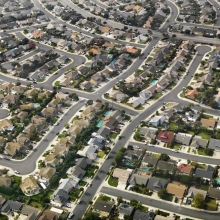A smart city—supported by digital solutions to enhance food access and mobility—is a healthy city. That’s the thinking behind the Implementing Smart Cities Interventions to Build Healthy Cities (SMART) Training Platform co-led by McGill, the University of Guelph and the University of Manitoba. Today, the Honourable Patty Hajdu, Minister of Health, and the Honourable François-Philippe Champagne, Minister of Innovation, Science and Industry, announced an investment of $4.95 million over six years for SMART.

The current pandemic will change cities, experts predict, the way infectious disease outbreaks influenced the development of urban centres in decades past. McGill University urban planning professor David Wachsmuth said cities have historically gone through cycles of densification and what he called “spaceification” — for example, after the Second World War when the federal government encouraged people to move from city centres to the “healthier” suburbs.
Cities and their rising impacts on biodiversity versity. To gain a clearer picture of the situation, an international group of scientists, including Professor Andrew Gonzalez from McGill’s Biology Department, surveyed over 600 studies on the impacts of urban growth on biodiversity. They published their findings today in Nature Sustainability.


The urban street network is one of the most permanent features of cities. Once laid down, the pattern of streets determines urban form and the level of sprawl for decades to come. In the U.S., urban sprawl has become an enduring hallmark of the past century. Yet, there are some glimmers of hope.

As more people move to urban areas, cities around the world are experiencing increased water stress and looking for additional water supplies to support their continued grow.
